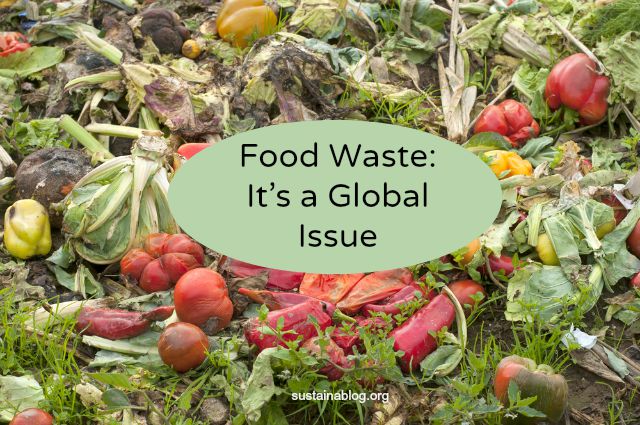If you’ve ever seen the film Idiocracy, you may remember that, in addition to a professional wrestler as president and “it’s got electrolytes!”, the city of Washington, D.C. (and likely others) were surrounded by mountains and mountains of trash. I have to wonder if the “idiots” of 500 years in the future produced more garbage, or just lost our ability to hide it well. Unless you’ve ever been to a landfill, your sense of the scale of our waste disposal may come down to your own trash can and recycling bin… and that probably doesn’t strike you as a crisis.
Over the past weekend, though, the issue of global food waste came up as world leaders discussed (and passed) the next round of sustainable development goals (SDGs) at the United Nations. Specifically, “SDG Target 12.3 will call for the world to cut per capita food waste in half by 2030.” That may strike you as impressive or not – without context, it’s a little hard to wrap your head around. The World Resource Institute’s Brian Lipinsky helps on this front by noting:
- We waste or lose $750 billion through the food supply chain every year. According to Lipinsky:
In Sub-Saharan Africa, one of the world’s poorest and most food-insecure regions, the World Bank estimates that just a 1 percent reduction in post-harvest losses could lead to economic gains of $40 million each year. And out of that $40 million, most of the benefits would go directly to the smallholder farmers growing the food.
- Our lost and wasted food produces about 3.3. gigatonnes of greenhouse gas emissions. As we’ve noted before, if global food waste were a country, it would rank only behind the United States and China in terms of greenhouse gas production.
- As world population grows, we’re going to face bigger challenges in feeding everyone: WRI predicts a 70% gap in the calories we produce now, and what we’ll need in 2050 to feed roughly 9.5 billion people. Wasting food at the level we do now won’t help bridge that gap.
How Do We Meet UN Goals for Reducing Global Food Waste?
In short, by relying on the mantra “What gets measured gets managed.” WRI, along with a number of NGO partners, is in the process of developing a Food Loss & Waste Protocol. According to the organization itself, this tool will “enable a wide range of entities – countries, companies and other organizations – to account for and report in a credible, practical and internationally consistent manner how much food loss and waste is created and identify where it occurs, enabling the targeting of efforts to reduce it.”
Want to dig into the protocol? There’s a draft for review available, and the final protocol should be available soon. Take a look, and then let us know what you think: can we avoid those mountains of trash surrounding our cities? Can we feed everyone in the coming decades?
Photo credit: Shutterstock


Rod Averbuch
Fresh food waste is a lose-lose situation for the environment, the struggling families in today’s tough economy and for the food retailers. Fortunately, there are new ways to reduce fresh food waste.
The new open GS1 DataBar barcode standard enables new food waste reduction applications that allow automatic progressive purchasing incentives for fresh perishables approaching their expiration dates. These applications also eliminate labor-intensive manual relocation and promotional labeling of the promoted perishable lots.
An example of such an application is the “End Grocery Waste” App. This GS1 DataBar based application encourages efficient consumer shopping behavior that makes fresh food affordable for all families, maximizes grocery retailer revenue, and effectively reduces the global carbon footprint.